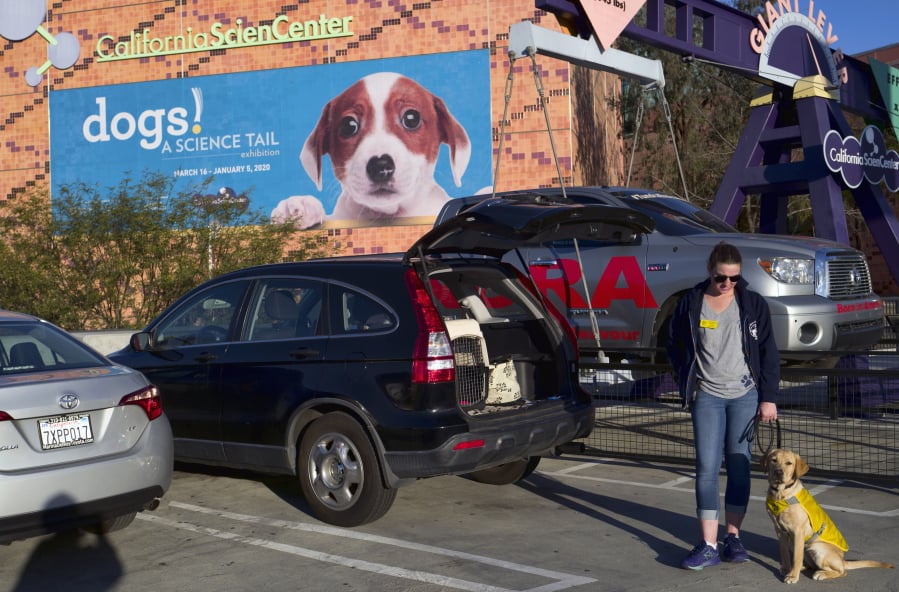LOS ANGELES — Did people domesticate dogs or was it the other way around? And why do these two species seem to think so much alike, act so much alike and get along so well?
The California Science Center has spent the past five years sniffing out the answers to those and hundreds of other vexing canine questions. It will begin revealing the conclusions Saturday with an ambitious, if somewhat lighthearted, new exhibition called “Dogs! A Science Tail.”
And, yes, real dogs will be there. (Just try hiding contraband from that drug-sniffing dog and see what happens.)
“It’s really not about just dogs and science. It’s really about how dogs and humans are both social animals. About how dogs and humans have evolved together over thousands of years. And the fact that because we are both social animals, we’ve learned to work together,” said Jeffrey Rudolph, the center’s president and a devoted dog lover who worked for years to pull this show together.
As he spoke during a recent pre-opening walkthrough of the exhibit, he paused briefly at what he imagines might be its most popular stop for the pre-teen crowd — a replica of a fire hydrant next to a button that you can push to smell what a dog smells.
“But we just smell pee,” Rudolph said with a laugh. “A dog can tell what dog was there, what time they were there and actually which direction they were going.”
It’s one of the ways dogs can evaluate how safe the surroundings are. It’s also how they manage to mark time without wristwatches or smartphones.
“They have an amazing ability to learn information,” continues Rudolph, noting the 300 million sensory receptor sites they carry in their noses far outnumber our 6 million.
Nine similar stations allow people to see like a dog does (their color vision is limited, but they pick up motion better than us), determine what a person has just eaten by licking their hand and hear sounds so subtle we’re oblivious to them.
“In a bedroom they can hear a termite scratching on the wall,” Rudolph says.
Such skills allow an avalanche rescue dog to sniff out a person buried in snow in a minute’s time while its handlers stand there without a clue. They can sniff out bombs people would never find until they exploded.
But those are the highly trained working dogs, like those shown in the center’s Imax Theatre, where the Cosmic Picture film “Superpower Dogs” will play throughout the exhibition’s run.
As Captain America actor Chris Evans narrates, viewers watch dogs from around the world help save people from drowning off the coast of Italy, rescue people trapped in collapsed buildings.



